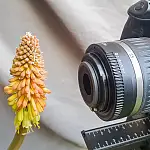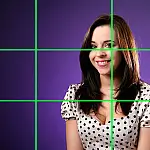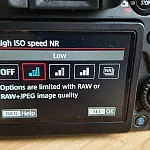How to Understand Camera Lenses and Focal LengthFocal length, usually represented in millimeters (mm), is the basic description of a photographic lens magnification. We also look at the different types of lens available.
This article is part of a series of articles. Please use the links below to navigate between the articles.
- Introduction to Photography Course - Definition & Types of Photography
- How Cameras Work and Terminology Explained for Beginners
- What is the Exposure Triangle and How Does It Affects Exposure?
- Understanding Camera Shutter Speed for Beginners
- Aperture and Depth of Field in Photography Explained
- What is Digital Photography ISO and Grain?
- How to Understand Camera Lenses and Focal Length
- Essential Photography Composition Rules To Improve Your Photos
- Camera Metering Modes Demystified - Which One To Use
- Camera Shooting and Exposure Modes Explained
- Complete Guide to Flash Photography for Beginners
- When and How To Use A Camera Tripod In Photography
- What Are White Balance And Colour Temperature Camera Settings?
- How to Use Camera Histograms in Photography for Perfect Exposure
- Master These 10 Camera Settings For Your Best Photographs
- Why You Should Be Shooting in RAW - Reasons and Benefits Explained
- Essential Photo Editing Techniques to Enhance Photographs
- Complete Guide to Macro Photography for Beginners
- Beginners Landscape Photography Guide for Stunning Photos
This tutorial mainly concentrates on DSLR lenses, however, the principles apply to all lenses, either fixed or zoom, smartphone or compact camera.
Types of Camera Lenses Available
There are two main types of camera lenses available - prime lenses and zoom lenses. A prime lens has a fixed focal length, such as 50mm or 135mm. Zoom lenses can change the focal length and are expressed as a zoom range, such as 70-300mm.

There are many advantages of zoom lenses; they are much more versatile as you don't need to keep changing lenses risking dust entry into the camera body and onto the sensor.
Prime lenses on the other hand usually have higher quality optics designed specifically for the set focal length. They are often cheaper as there are fewer lenses internally and fewer mechanisms, something which also makes them lighter and more compact. They also tend to have a wider maximum aperture, say f/2 or even f/1.4 which is a distinct advantage when shooting in low light conditions.
Lenses also come in different categories depending on the focal length.
- Super Wide angle lenses are typically between 10mm and 24mm.
- Wide-angle lenses are typically between 24mm and 35mm.
- The "standard lens" is between 35mm and 70mm.
- Anything above 50mm is considered a telephoto lens as it is magnifying.
- Telephoto lenses can be either zoom or prime.
What is the Difference between a Zoom lens and Telephoto Lens?
Often confusing to beginners, the difference between telephoto and zoom lenses is an important one. Telephoto lenses are generally lenses above 50mm as it magnifies subjects. Telephoto lenses are generally prime lenses (fixed focal length). Zoom lenses are any lens that can change the focal length and can be wide angle (10-24mm zoom) or telephoto zoom (70-135mm).
What is Focal Length?
The focal length of a lens is not what is commonly believed, the actual length of a lens, but instead a calculation of an optical distance from the point where light rays from an object focus on the digital sensor or 35mm film surface. In short, the focal length of the lens is the measure of how "zoomed in" your lens is. The focal length of a lens is calculated when the lens is focused at infinity.
The focal length of the lens describes the angle of view - how much of the scene will be captured, and the magnification - how large the object will be. The longer the length, the narrower the angle of view and the higher the magnification. The shorter the focal length, the wider the angle of view and the lower the magnification. This is demonstrated in the focal length example images below where you can see how increasing the focal length makes the tree appear larger.

Focal length also affects perceptual perspective. As the focal length and magnification of a lens increase, the image appears more compressed, resulting in less visual distinction and separation between the foreground, middle ground, and background.
How to Tell What Focal Length The Lens Is
Lenses come with their specification printed on them, in this example, it is written as "18-55mm f/3.5-5.6".

This means that the widest the lens can go is 18mm and the most zoomed-in the lens can go is 55mm. At 18mm the widest aperture is f/3.5 and at 55mm the widest aperture is f/5.6. Some lenses only give one aperture value. This means that it has a constant aperture throughout the zoom range.
Lenses also have a scale printed on the lens, or there may be a little display window or LCD, all of which show the current focal length. As you turn the barrel of the lens to zoom in, you can look at the scale on the end of the lens to see what specific focal length you are shooting at.
After you've taken a picture, almost all cameras will save the focal length information in the image metadata of a picture. So if you want to go back and see what focal length you used to get a certain look, then you can go into the properties of the photo and see that.
Some cameras, mainly smartphones and compact cameras may be advertised as having a "times zoom" such as 5x zoom or 10x zoom. This means that the maximum zoom is 5 times the widest focal length. So our little 18-55mm lens has approximately 3x zoom (18mm x 3 = 54).
What is the Focal Length of a Human Eye?
That is a difficult question to answer exactly as it varies from person to person and the method by which it is calculated. Calculated focal length values from optometric diopter values give a focal length of the human eye to be around 17mm, whilst measuring the physical refraction in the eye gives a value between 22mm to 24mm.
Using lenses around the 22-24mm range will produce results similar to what you see with your eyes. Using a shorter focal length, like 10mm will make the image appear zoomed out, whilst larger focal lengths like 35mm will make the image appear zoomed in.
What is Camera Focal Length Crop Factor?
Often people will tell you what the lens would be in a 35mm equivalent by using a "crop factor" which is the size of your camera's sensor in relation to a 35mm frame of film. In terms of today's DSLRs, most sensors are the APS-C-sized format, smaller than that of a 35mm (ie full) frame. Professional-grade cameras such as Canon's 5D feature a full-frame size sensor and there is no crop factor applied to these.
Crop factor results in a magnification of a lens's focal length, whose value is determined by the sensor's size in comparison to a standard full-frame. Manufacturers refer to this magnification as the "crop factor" - or, how much of the image is cropped due to the smaller sensor.
The APS-C format, measuring around 24x16mm, is smaller than a full-frame sensor by a factor of 1.5x. So, the focal length of a lens must also be multiplied by this amount to arrive at its effective (35mm equivalent)focal length - so a 28mm lens becomes a 42mm lens, a 50mm lens becomes a 75mm lens and so on.

Focal Length and Depth of Field
Depth of Field is all about how much of the shot you are taking is in focus. Along with the aperture, the focal length is a key factor in controlling the depth of field. In general, to create a shallow depth of field (blurry backgrounds) you need to increase the distance between your subject, the background and the camera. You then need to zoom in on the subject. Together with a small aperture (f/2.8 or 5.6 for example), you can blur the background to make your subject stand out. If your subject is close to the background then this will not work, also if the camera is too close to the subject it will not work to blur the background.
Lens Compression Effects
Have you ever wondered how photographers can make their subjects seem so close to objects in the background? Perhaps you've seen photos of a moon that seems impossibly big against a skyline and thought it must be Photoshopped. Well, you can achieve this effect without any computer manipulation, using a technique known as lens compression.
Lens compression is an effect that comes about by moving the position of the camera in relation to the subject you are photographing. As you move further away from the subject, you will usually zoom in on your subject to make it larger. For example, if you are taking a portrait of a person from further away, you will want them to fill more of the frame, so you will zoom in. This has the effect of making the subject appear closer to the background.
Here's an example to give an idea of lens compression in action. The first image is shot with the camera close to the subject using a wide angle. The second image is shot using a telephoto around 200mm with the camera placed much further back from the subject. Notice how the trees in the background look much closer to the subject in the second photo.
< Image Not Found! >
A Warning About Digital Zoom!
Most cameras offer a digital zoom facility. Don't bother with digital zoom. For fixed-lens cameras and smartphones, note whether the lens offers true optical or digital zoom. Optical zoom is a true zoom lens and produces the best picture quality. Digital zoom is a software feature that crops away from the outside of the image and enlarges the remaining area, a process that significantly lowers image quality. If your camera has a setting for digital zoom my recommendation is to turn it off. If you need to zoom in either get closer or use an application such as Photoshop or Lightroom which can enlarge sections with much greater quality.











